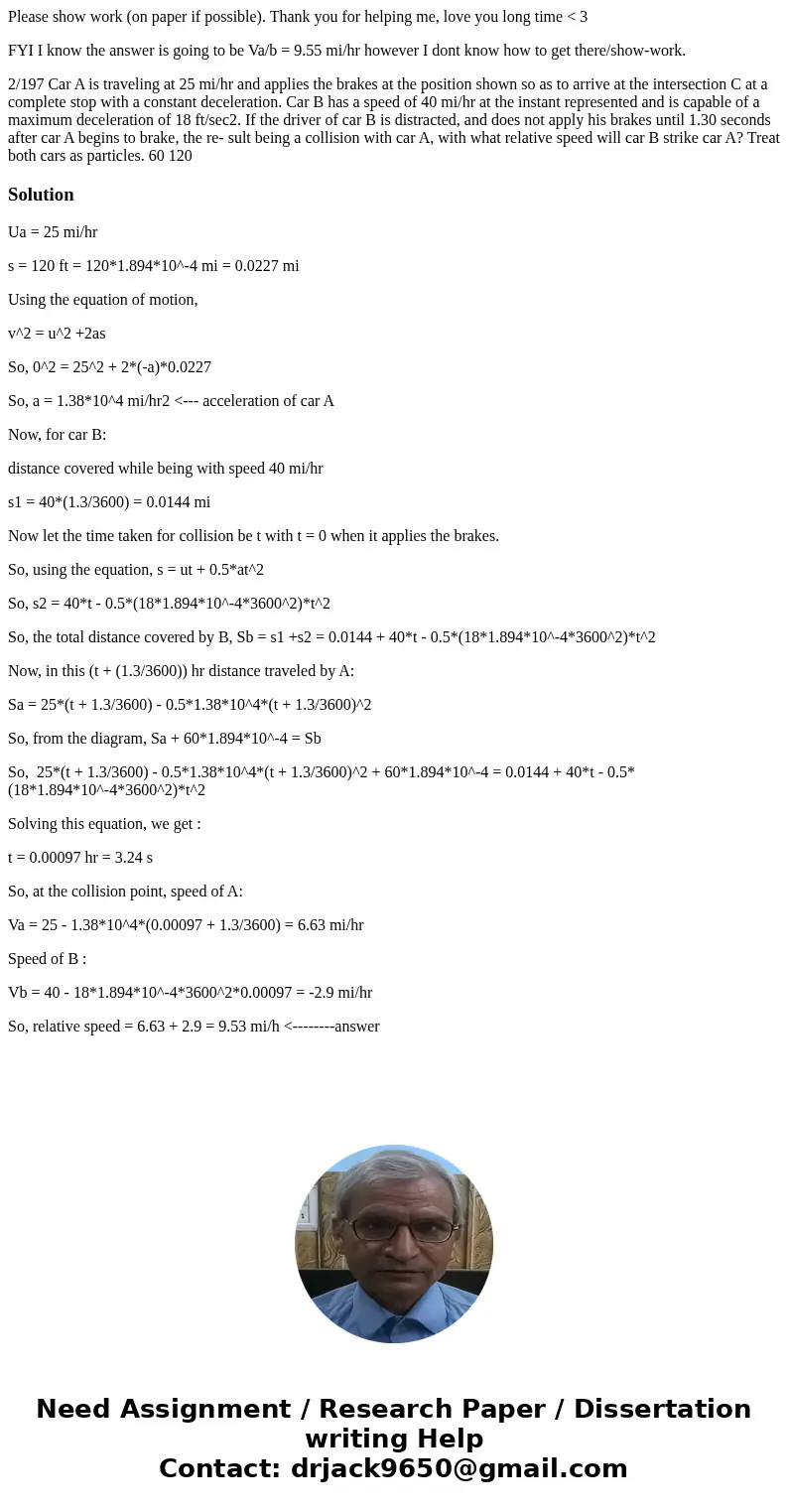Please show work on paper if possible Thank you for helping
Please show work (on paper if possible). Thank you for helping me, love you long time < 3
FYI I know the answer is going to be Va/b = 9.55 mi/hr however I dont know how to get there/show-work.
2/197 Car A is traveling at 25 mi/hr and applies the brakes at the position shown so as to arrive at the intersection C at a complete stop with a constant deceleration. Car B has a speed of 40 mi/hr at the instant represented and is capable of a maximum deceleration of 18 ft/sec2. If the driver of car B is distracted, and does not apply his brakes until 1.30 seconds after car A begins to brake, the re- sult being a collision with car A, with what relative speed will car B strike car A? Treat both cars as particles. 60 120Solution
Ua = 25 mi/hr
s = 120 ft = 120*1.894*10^-4 mi = 0.0227 mi
Using the equation of motion,
v^2 = u^2 +2as
So, 0^2 = 25^2 + 2*(-a)*0.0227
So, a = 1.38*10^4 mi/hr2 <--- acceleration of car A
Now, for car B:
distance covered while being with speed 40 mi/hr
s1 = 40*(1.3/3600) = 0.0144 mi
Now let the time taken for collision be t with t = 0 when it applies the brakes.
So, using the equation, s = ut + 0.5*at^2
So, s2 = 40*t - 0.5*(18*1.894*10^-4*3600^2)*t^2
So, the total distance covered by B, Sb = s1 +s2 = 0.0144 + 40*t - 0.5*(18*1.894*10^-4*3600^2)*t^2
Now, in this (t + (1.3/3600)) hr distance traveled by A:
Sa = 25*(t + 1.3/3600) - 0.5*1.38*10^4*(t + 1.3/3600)^2
So, from the diagram, Sa + 60*1.894*10^-4 = Sb
So, 25*(t + 1.3/3600) - 0.5*1.38*10^4*(t + 1.3/3600)^2 + 60*1.894*10^-4 = 0.0144 + 40*t - 0.5*(18*1.894*10^-4*3600^2)*t^2
Solving this equation, we get :
t = 0.00097 hr = 3.24 s
So, at the collision point, speed of A:
Va = 25 - 1.38*10^4*(0.00097 + 1.3/3600) = 6.63 mi/hr
Speed of B :
Vb = 40 - 18*1.894*10^-4*3600^2*0.00097 = -2.9 mi/hr
So, relative speed = 6.63 + 2.9 = 9.53 mi/h <--------answer

 Homework Sourse
Homework Sourse